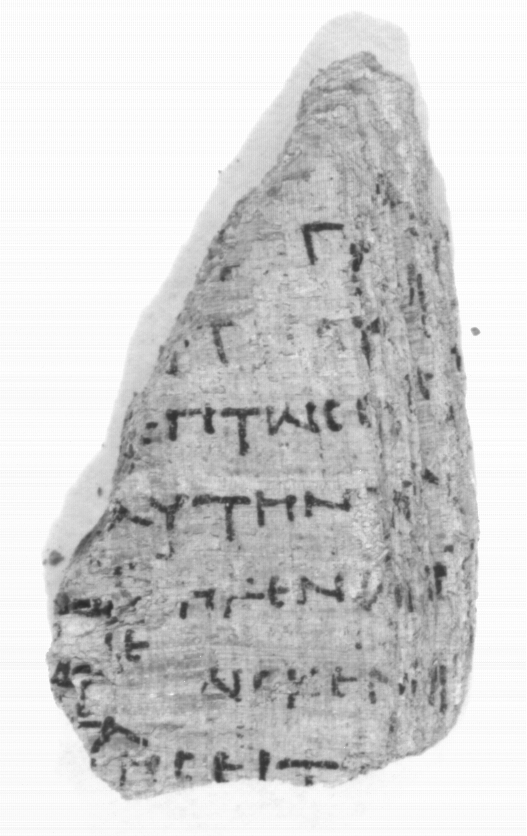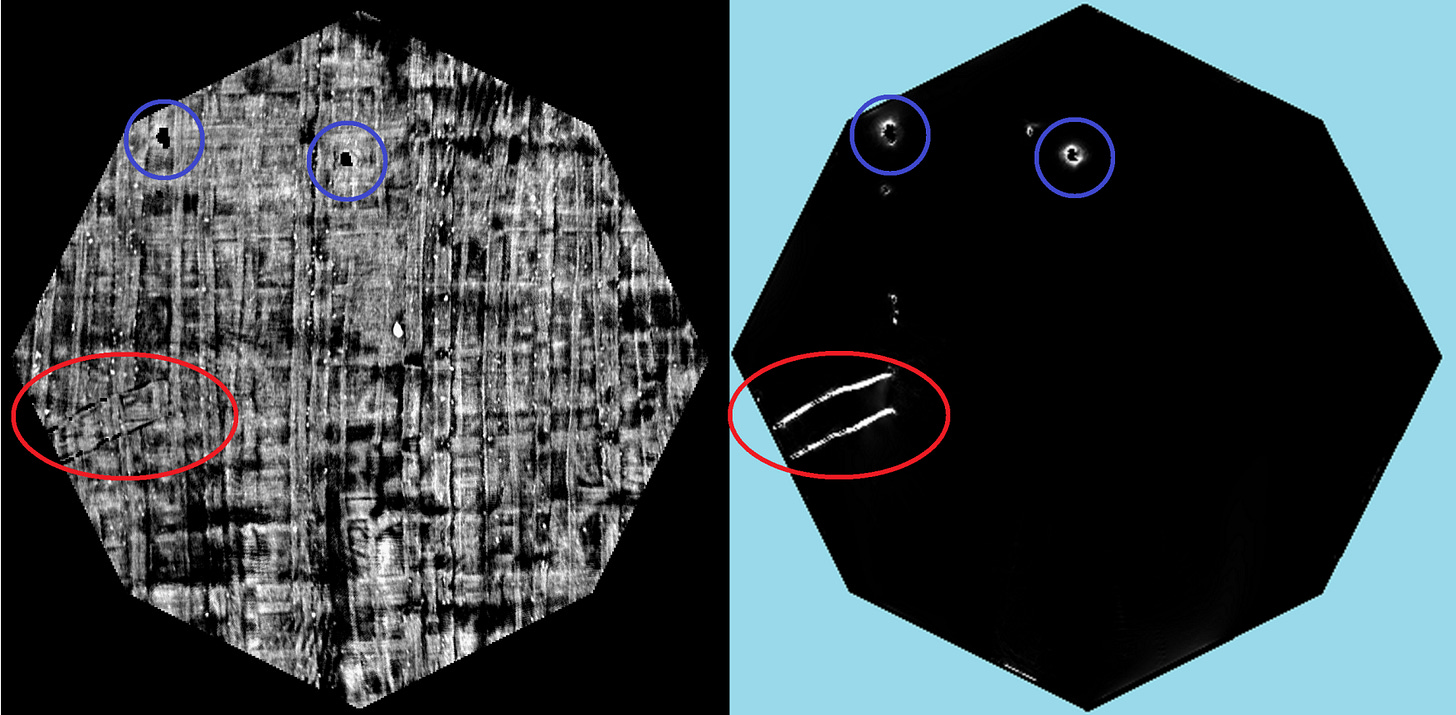Scanning the fragments
Last May we scanned a batch of carbonized scrolls on the BM18 beamline at the European Synchrotron Radiation Facility (ESRF) in Grenoble, France. BM18 is specifically designed to harness the coherence of a 4th generation synchrotron for phase-contrast X-ray tomography, a scanning technique we decided to test!
In the batch of samples, three fragments—PHerc. 9B, PHerc. 343P, and PHerc. 500P2—are especially intriguing. They broke free decades ago during mechanical unwrapping attempts, leaving their inked sides exposed and visible to the naked eye.

The team has performed—and will keep running—experiments on these fragments, looking for the optimal scanning protocol that will allow us to read the scrolls.
Indeed, a big open question we’ve wrestled with for months is: why can we read ink on Scroll 1 (PHerc. Paris 4) and Scroll 5 (PHerc. 172) and not on Scrolls 2-4 (PHerc. Paris 3, PHerc. 332 and PHerc. 1667)? We believe the answer may come from the fragments, on which we can see ink, and hence could compare the results of our ink detection ML models against tangible labels.
With this goal in mind, the fragments have been scanned at varying resolutions, beam energies, and sample-to-detector distances, trying to capture as much ink signal as possible!
Data release policy—changing gears
In our pursuit of perfection we’ve held data a bit too close to the vest. We decided to change this habit! We’ll drop new data more often—good enough to fulfill curiosity, even if not always complete. Everything is still in flux, so bear with us if some files, formats, or filenames evolve before they settle.
Observe the new data and read our draft info-sheet for more information!
And don’t forget to fly directly in the volumes:
Preliminary ink detection results
Although the carbon ink is invisible in the raw renders, our ML models recover several strokes of ink in scans captured at 2.2 µm pixel size.


These results are particularly exciting for PHerc. 343P—a fragment from the still-unopened scroll PHerc. 343, currently resting in Naples and just waiting to be kissed by the beam!
Progress Prizes
This month we are awarding yet another contribution from a distinguished community member.
$ 2,500
Will Stevens / @willstevens0478_75318 continues to develop a particle based simulation that grows flat patches on the scroll surface by exploiting machine learning based surface predictions. Will found that high-stress areas that occur during growth often correspond to errors in surface predictions, and that this information could be exploited to mitigate the errors in the growth process. His brilliant report is available here, and we are excited to see where this research venue is bringing him!





Have you considered an experimental approach where you create "new" scrolls?
By using materials (papyrus, if possible, or similar organic material) and ink as close to the originals as possible, and then carbonizing them in an oven under conditions mimicking the eruption of Vesuvius, you could potentially create labeled training data, close to the original, only without the time effects. This could provide a near perfect dataset where you know exactly what's written how the scroll was rolled, etc, and then you could analyze how the carbonization process affects ink visibility with your scanning techniques and ML models, without the added complexities of precious originals.
Just a thought – keep up the incredible work!